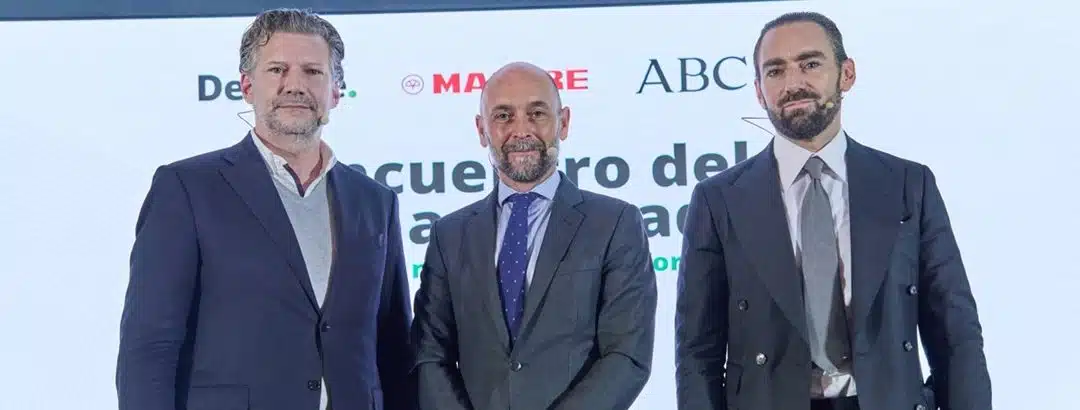Cristina Leon Vera | 25/09/2024
The collapse of the bridge in Baltimore highlighted the importance of urban bridges and their role in the economic and social development of cities. Preventing structural damage and avoiding service interruptions is essential.
Risk management and maintenance of these essential infrastructures has evolved over the years. We spoke again with Rubén Rodríguez Elizalde, Public Works Technical Engineer to learn about the methods and technology at the service of these icons and arteries of the world’s great cities.
Ensuring the safety of these types of structures is complex, and there is no single way to do so. “The primary vulnerabilities of a bridge vary depending on its design, the materials used, and its surrounding environment,” explains the expert. However, five common weaknesses typically account for the most frequent types of damage:
- Structural: These include wear and tear in the bridge’s constituent materials, corrosion of the steel corrosion or deterioration of the concrete.
- Environmental: These encompass all the contextual conditions of the environment surrounding the structure.
- Use and useful life of the bridge: Traffic, overloading, vehicle impacts and other related factors.
- Maintenance deficiencies: These vulnerabilities begin to manifest once the bridge is in operation.
- Human-related damage: These are related to improper human use, often associated with vandalism.
Keys to risk prevention
As vital road structures that are subject to constant and harsh use, bridges cannot simply be allowed to wear out or await eventual replacement; they are long-lasting infrastructures designed for extended service. To ensure they remain intact and continue to serve the public, it’s essential to provide ongoing maintenance and care for their components. “The key to effective preventive maintenance is the ongoing monitoring and assessment of a structure’s condition throughout its lifespan by means of the various types of inspections required under current regulations,” explains Rodríguez Elizalde. He highlights the critical role of structural assessments, which are essential to a bridge’s conservation program, as they “provide the necessary data to evaluate its functional, structural, and even aesthetic state at any given time.”
The information collected from these routine inspections makes it possible to identify any necessary maintenance or repair actions and ensures that appropriate safety measures are in place to prevent accidents. The technical engineer outlines the basic types of inspections included in management system review programs, ordered from least to most complex:
- Routine inspection. Conducted visually and can be performed by non-specialized personnel.
- Principal inspection. Also a visual inspection, but conducted by individuals with specific qualifications for the task.
- Special inspection: In addition to a visual inspection, this involves conducting tests to assess and characterize the components or materials of the bridge.
“Inspection, surveillance, and proactive maintenance of any damage that may occur are essential to ensuring a bridge’s safety and functionality throughout its useful life. Addressing issues as soon as they are detected is always faster and less costly than waiting for the damage to worsen,” he adds.
Technology in an uncertain future
As we discussed in the article “Urban Bridges: Icon and Key City Structure,” technological advancements are decisively influencing the design and construction of urban bridges, particularly when it comes to safety, with the use of monitoring and maintenance technologies. Some of the most established techniques for their maintenance are:
- Intelligent sensors and real-time monitoring systems. Mechanisms that, integrated into the bridge structure, can detect stresses, movements, and other indicators of wear and tear, thus enabling predictive maintenance and extending the life of the structure.
- Drones and robots, used for inspecting hard-to-reach areas, provide accurate data without the need for scaffolding or disruptions to bridge use.
The impact of urban bridges on the daily life of a city is undeniable, and there will be increasing demands for greater strength and durability. “They will encounter major challenges in the future, not only in terms of maintenance but also in adapting to new realities such as rising demand, urban expansion, and climate change. Additionally, there will be a growing focus on sustainability, with expectations that these structures will increasingly minimize environmental impact through the use of more eco-friendly materials and construction techniques,” states Rodríguez Elizalde. He also mentions a critical global challenge: financing. “Economic crises have shown us the how important it is to have sufficient funds for construction and maintenance,” he concludes.
The contributor to this article is…
 Rubén Rodríguez Elizalde is a Public Works Engineer (degree in Civil Engineering) and holds a bachelor’s degree in Building and a PhD in Architecture and Heritage. Additionally, he has a university degree in Occupational Risk Prevention.
Rubén Rodríguez Elizalde is a Public Works Engineer (degree in Civil Engineering) and holds a bachelor’s degree in Building and a PhD in Architecture and Heritage. Additionally, he has a university degree in Occupational Risk Prevention.
At a professional level, he specializes in structural pathology and rehabilitation, and has conducted preventive management work mainly in the construction, metal and entertainment sectors.
He has coordinated the health and safety of renowned works, such as the final demolition of the Windsor Building in Madrid, the construction phase of the Puerta de Las Rozas Bridge, the Municipal Museum of Torrejón de Ardoz, and the refurbishment of the Old Printing Works in Madrid. He is currently a lecturer at various universities such as the Universidad Europea de Madrid and the Universitat Oberta de Catalunya.





